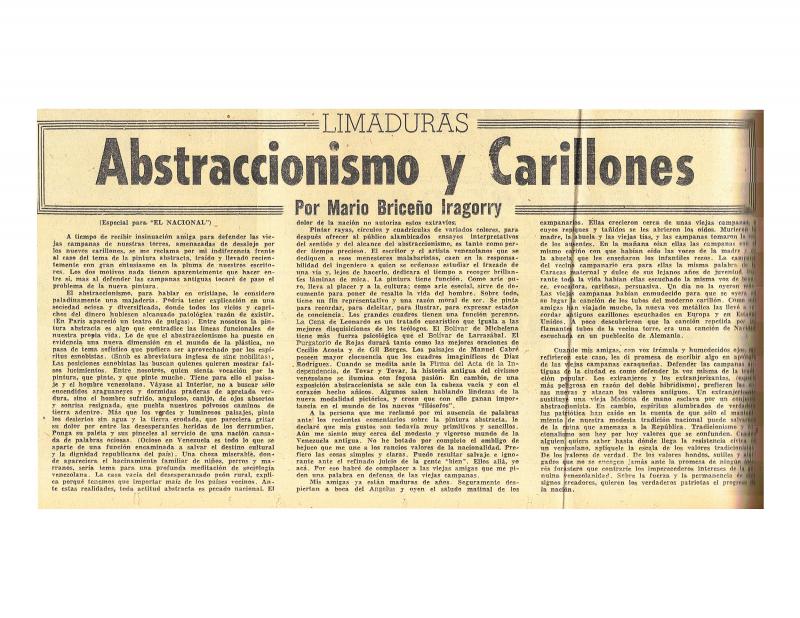This “Second note” is, in a sense, a continuation of the first article, “Abstraccionismo y carillones” [doc. no. 850810], which sparked a debate between a number of artists and writers who were either for or against the new kind of art. Mario Briceño Iragorry (1897–1958) was an intellectual Christian humanist and, as such, a staunch supporter of those traditions (including nationalism), so his rejection of Abstract art comes as no surprise. His views were shared by writers and artists who were involved in landscape art and social realism, the two major themes at that time in Venezuela in terms of both public taste and the art market. Unlike the first article, what this “note”—as the author, with false modesty, describes it—mainly reveals is the sociological, even political attempt to find values in art which, in his opinion, is just one more example of the imperialist invasion. He thus associates it with feelings of anxiety, but also with a desire to avoid any involvement in the conflicts that, in his opinion, are spawned by capitalism. He admits that he is not a specialist in the field, but nonetheless—with no shortage of irony—presumes to speculate on the meaning, origins and demise of Abstract art. His final paragraph, laced with indifference and irony, in which he lists the supposed axiology of Abstract art, is a good example of writing that is aware of its own exhaustion and impotence, faced with innovation that is incomprehensible to one who endorses representative painting as a universal value.
This article, like the earlier one, was written as a response to the first exhibition of Abstract art, from March through May 1952, organized by the Cuatro Muros gallery under the leadership of the painters Mateo Manaure and Carlos González Bogen, members of the disbanded avant-garde group Los Disidentes (Paris, 1950) that supported the new art. Briceño Iragorry’s article was challenged in “Alejandro Otero and Mario Briceño Iragorry debate Abstract art,” which led to the second Venezuelan debate on this subject after the one that flared up between Miguel Arroyo and César Rengifo in 1948. Both of Briceño Iragorry’s articles were reprinted in his book El hijo de Agar (Caracas: Ediciones Independencia, 1954); they were also collected by Roldán Esteva-Grillet and included in Volume II of Fuentes documentales y críticas sobre las artes plásticas venezolanas: siglos XIX y XX (Caracas: Universidad Central de Venezuela, 2001).

